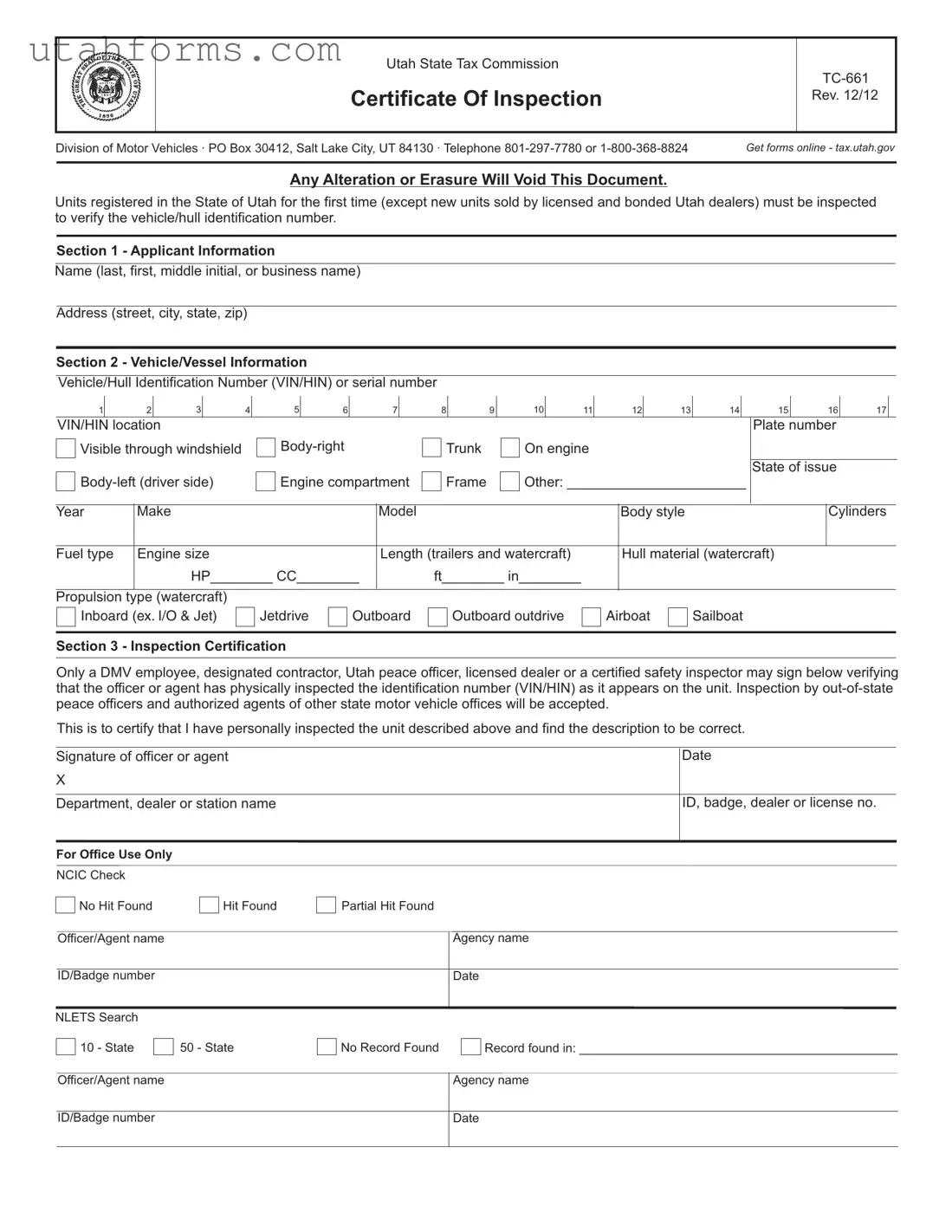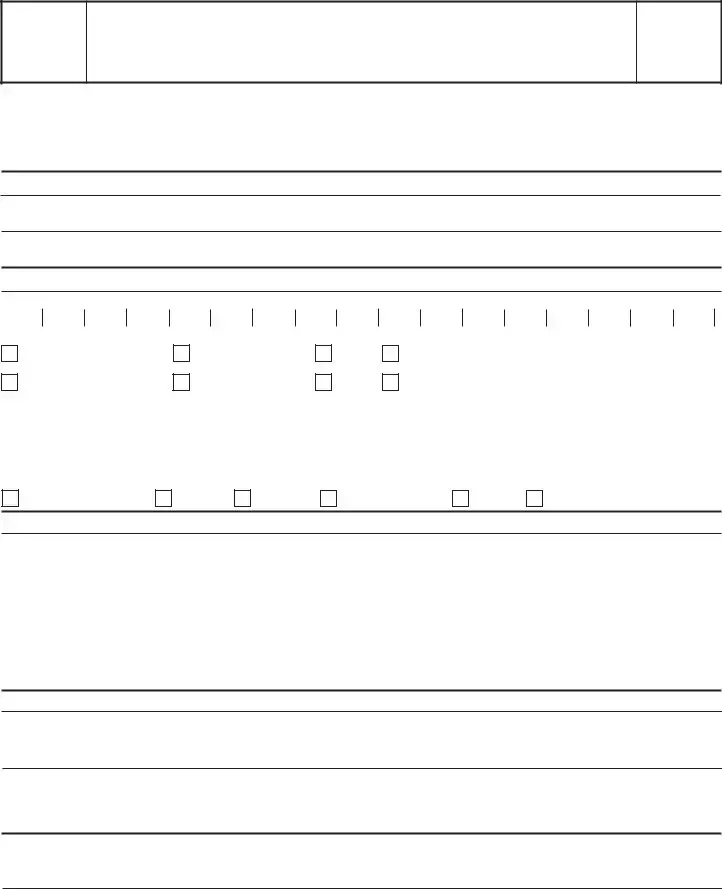The Utah TC 661 Certificate of Inspection form shares similarities with the Vehicle Inspection Report (VIR), often required when registering or renewing a vehicle's registration. Both documents serve as a confirmation of the vehicle's condition and compliance with safety standards. The main similarity lies in their purpose: to ensure that the vehicle meets the state's safety and emission requirements. The TC 662 form focuses specifically on verifying the vehicle identification number (VIN) and other physical attributes of the vehicle, while the VIR encompasses a broader range of inspection criteria, including emissions testing and safety feature checks.
Another related document is the Application for Title or Registration, used in various states. Like the TC 661, this form requires detailed information about the vehicle or vessel, such as make, model, and VIN. Both forms are integral in the process of legally recognizing ownership and the right to operate the vehicle within the state. The key similarity lies in gathering critical information to ensure the vehicle's identification is accurately recorded in state databases, thereby preventing fraud and theft.
The Bill of Sale is another document that shares common ground with the TC 661. It provides proof of a transaction between a seller and a buyer, detailing the exchange of vehicle ownership. While the Bill of Sale focuses on the commercial aspect – selling and buying – the TC 661 emphasizes compliance with state regulations. However, both are crucial for the vehicle registration process, serving as legal documents that support ownership and identification verification.
The Odometer Disclosure Statement, required during the sale and purchase of a vehicle, parallels the TC 661 form in its contribution to preventing fraudulent activities. It records the vehicle's mileage at the time of sale, providing transparency and honesty in transactions. Similarly, the TC 661 form’s role in verifying the VIN and ensuring the vehicle's identity plays a pivotal part in maintaining the integrity of the vehicle registration system.
Similarly, the Salvage Certificate, issued for a vehicle that has been declared a total loss, shares common purposes with the TC 661. While the Salvage Certificate identifies vehicles that have sustained significant damage, the TC 661 form certifies the legitimacy and identification of a vehicle before it is registered. Both documents are essential in the lifecycle of a vehicle’s operation and legal status within the state.
The Emissions Testing Report is closely related to the Utah TC 661 form, particularly for vehicles in areas requiring emissions testing for registration renewal or initial registration. While the TC 661 form focuses on the physical inspection and verification of the vehicle's identification number, the Emissions Testing Report ensures that the vehicle meets environmental standards set by the state. Both inspections are vital for maintaining public safety and health standards.
The Lien Release document also correlates with the TC 661 in the broader context of vehicle ownership and registration. When a vehicle loan is fully paid off, a Lien Release is issued to remove the lender’s claim on the vehicle as collateral. This process is complementary to the inspection and verification aims of the TC 661, ensuring that all legal and regulatory hurdles are cleared for a vehicle's operation and ownership transfer.
Finally, the Dealer Reassignment Form is akin to the TC 661 form in the context of vehicle transactions. This form is used by dealers to document the transfer of a vehicle to another dealer or purchaser when the title lacks space for such information. It complements the TC 661 by further ensuring that vehicle identification and ownership details are thoroughly documented and legitimate, facilitating a transparent chain of ownership and compliance with state regulations.

